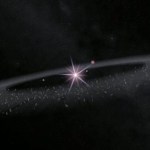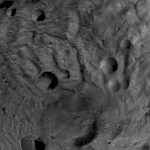Vesta
"I have announced this star as a comet, but since it is not accompanied by any nebulosity and, further, since its movement is so slow and rather uniform, it has occurred to me several times that it might be something better than a comet. But I have been careful not to advance this supposition to the public." -Giuseppe Piazzi, discoverer of Ceres, the first Asteroid
Out beyond Mars, but not quite out as far as Jupiter, a collection of thousands of rocky objects, ranging in size from pebbles all the way up to the size of Texas, lies the asteroid belt.
Image credit: David Minton and Renu…
Vesta is the second biggest asteroid in the famous asteroid belt between Mars and Jupiter. It has generally been thought that Vesta would get enough sun over its entire surface that water would not survive, but a recent survey of the surface indicates that deeply buried water has a chance of remaining on the asteroid near the poles, or possibly at the bottom of some deep craters.
Vesta Up Close (image by NASA)
This is interesting, in part, because of questions about the role of water in the early formation of the solar system. One of the main objectives of the Dawn spacecraft mission is to…
When the stars align, the results can be nothing short of spectacular. On Starts With a Bang, Ethan Siegel shows us an "Einstein ring" photographed by the Hubble Space Telescope. This celestial halo surrounds a massive red galaxy, and is in fact light from a much more distant galaxy focused by gravity. Ethan explains, "gravity will bend spacetime, forcing light into a curved path. If a very distant galaxy is properly lined-up with us and a less distant—but very massive—galaxy, its light will not only be bent into a ring if the alignment is perfect, but its light will be greatly magnified…

